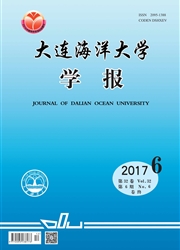

 中文摘要:
中文摘要:
为研究植物对原油污染土壤的生物修复作用,以中国北方滩涂优势种植物翅碱蓬Suaeda heteroptera为试验对象,将其在含不同原油浓度(0、4000、8000、12 000、16 000、20 000 mg/kg)的土壤中进行盆栽试验,测定翅碱蓬栽培前后土壤的p H、总有机碳(TOC)、全氮、全磷含量和脱氢酶活性,分析翅碱蓬对原油污染土壤理化性质的影响。结果表明:翅碱蓬能够降低偏碱土壤的p H值,使之趋近中性,能使土壤TOC值略升高,使脱氢酶活性明显提高,全氮含量明显升高,而低浓度原油试验组土壤全磷含量基本正常。研究表明,翅碱蓬对轻度原油污染土壤有较好的修复功能。
 英文摘要:
英文摘要:
Seepweed herb Suaeda heteroptera as a plant in north China was cultivated in soil containing crude petro- leum at a rate of 0, 4000, 8000, 12 000, 16 000, and 20 000 mg/kg in a pot, and the soil physical and chemical properties including pH, contents of total organic carbon(TOC), total nitrogen, and total phosphorus and dehydro- genase activity were determined 30, 60, 90, 120, 150 and 180 days after cultivation to understand the roles of seepweed herb in bioremediation of the soil contaminated by the different concentrations of crude oil. The results showed that the cultivation of seepweed herb led to lower pH, near to neutral, in the slightly alkaline soil, and re- sulted in promotion of the TOC to a favorable level. In addition, there were significantly higher dehydrogenase activi- ty and total nitrogen content in soil in the experimental groups than those in the control group. Even in the soil in low crude petroleum concentration group, the total phosphorus content was in a normal level, indicating that the seepweed herb has good bioremediation in the soil contaminated lightly by crude oil.
 同期刊论文项目
同期刊论文项目
 同项目期刊论文
同项目期刊论文
 期刊信息
期刊信息
